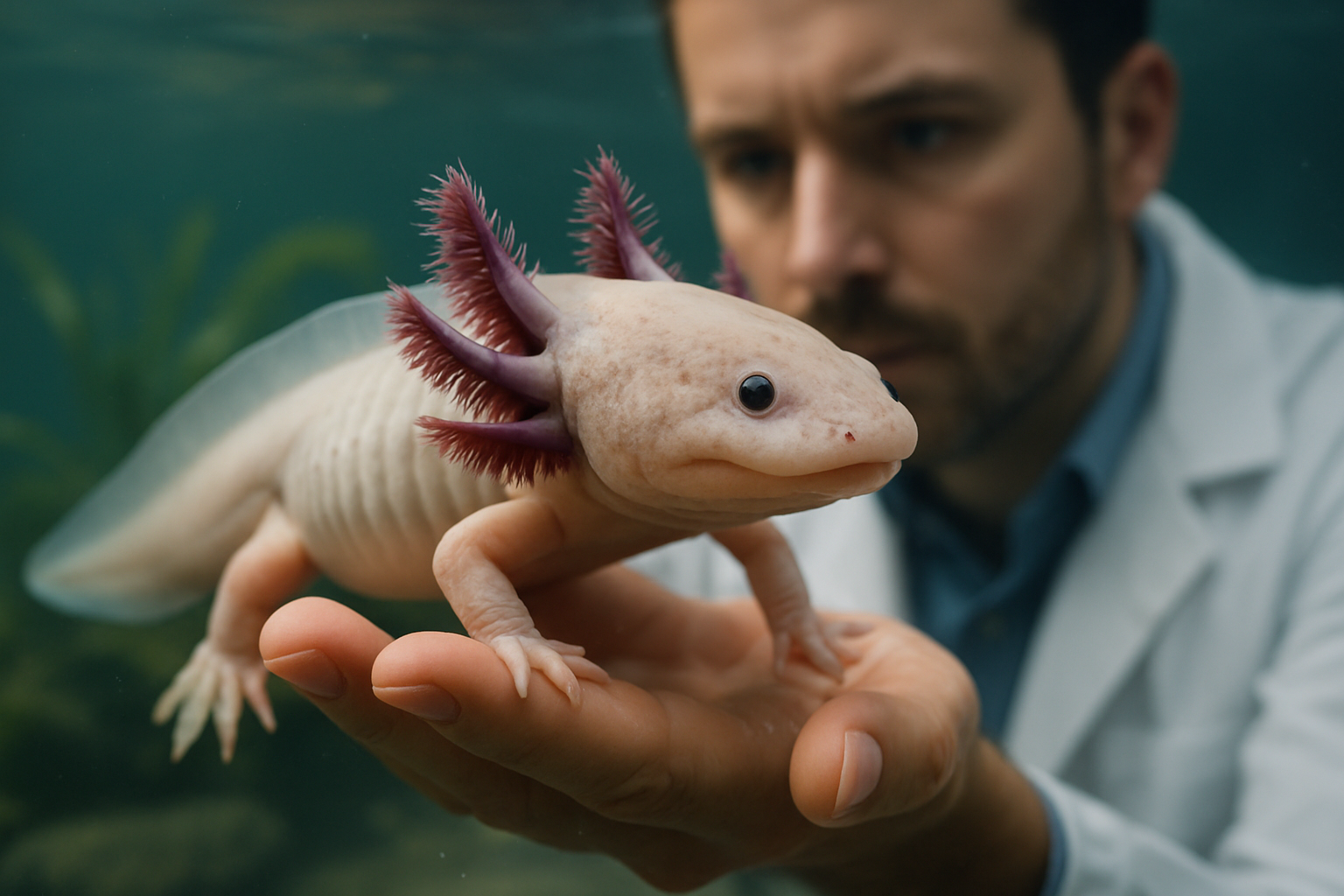Decoding the Enigmatic World of Axolotl Regeneration
Axolotls, the charming salamanders native to Mexico, have captivated scientists and animal enthusiasts alike with their extraordinary regenerative abilities. These aquatic creatures possess an unparalleled capacity to regrow lost limbs, organs, and even parts of their brain, making them a subject of intense scientific study and wonder. In this article, we delve into the fascinating realm of axolotl regeneration, exploring its mechanisms, potential applications, and the ongoing efforts to unravel its secrets.

The Evolutionary Marvel of Axolotls
Axolotls, scientifically known as Ambystoma mexicanum, are neotenic salamanders that retain their larval features throughout their lives. This unique characteristic, coupled with their regenerative capabilities, has made them an evolutionary oddity. Unlike most salamanders, axolotls do not undergo metamorphosis, remaining aquatic and gilled throughout their lifespan. This arrested development is believed to play a crucial role in their regenerative abilities, as it allows them to maintain a more plastic cellular state.
The evolutionary history of axolotls traces back millions of years, with their lineage diverging from other salamanders during the Cretaceous period. Their isolated habitat in the ancient Lake Xochimilco near Mexico City has contributed to the preservation of their unique traits. However, this same isolation now threatens their existence in the wild, as habitat destruction and pollution have pushed them to the brink of extinction.
The Molecular Dance of Regeneration
At the heart of axolotl regeneration lies a complex interplay of molecular signals and cellular processes. When an axolotl loses a limb, a rapid cascade of events is set into motion. Within hours of injury, a specialized structure called the wound epidermis forms over the wound site. This structure acts as a signaling center, orchestrating the regenerative process.
One of the key players in axolotl regeneration is the blastema, a mass of dedifferentiated cells that forms at the injury site. These cells have the remarkable ability to revert to a stem cell-like state, allowing them to differentiate into various tissue types needed for limb reconstruction. The blastema is guided by a precise set of genetic instructions, ensuring that the regenerated limb is an exact replica of the original.
Unraveling the Genetic Code
Recent advancements in genomic sequencing have provided unprecedented insights into the genetic underpinnings of axolotl regeneration. In 2018, scientists successfully sequenced the axolotl genome, revealing it to be ten times larger than the human genome. This massive genome contains numerous genes and regulatory elements that are crucial for regeneration.
One of the key findings from genomic studies is the identification of several genes that are upregulated during the regeneration process. These include genes involved in wound healing, cell proliferation, and tissue patterning. Of particular interest are genes like PAX7, which plays a crucial role in muscle regeneration, and TGF-β, which is involved in various aspects of tissue repair and regeneration.
From Axolotls to Humans: Bridging the Gap
The potential applications of axolotl regeneration research in human medicine are vast and exciting. While humans possess limited regenerative capabilities, understanding the molecular mechanisms behind axolotl regeneration could pave the way for novel therapies in tissue engineering and regenerative medicine.
One area of particular interest is spinal cord regeneration. Axolotls can regenerate their spinal cords with remarkable fidelity, restoring both structure and function. Researchers are exploring ways to translate this ability to humans, potentially offering hope for individuals with spinal cord injuries. Similarly, studies on heart regeneration in axolotls could lead to new treatments for heart disease and improve cardiac repair after heart attacks.
Challenges and Future Directions
Despite the tremendous progress in axolotl regeneration research, significant challenges remain. One of the primary hurdles is translating findings from axolotls to humans, given the vast differences in our biology and evolutionary history. Additionally, the complexity of the regeneration process and the intricate interplay of various factors make it challenging to isolate and replicate specific mechanisms.
Looking ahead, researchers are focusing on several key areas to advance our understanding of axolotl regeneration. These include:
-
Single-cell sequencing to map the cellular dynamics during regeneration
-
CRISPR gene editing to manipulate specific genes involved in the regeneration process
-
Development of axolotl-derived organoids to study regeneration in a controlled environment
-
Comparative studies with other regenerative species to identify common mechanisms
Conservation Efforts and Ethical Considerations
As research on axolotl regeneration continues to advance, it is crucial to address the conservation status of these remarkable creatures. Wild axolotl populations have declined dramatically in recent years, with estimates suggesting fewer than 1,000 individuals remain in their natural habitat. Conservation efforts are underway to protect and restore axolotl habitats, including initiatives to clean up Lake Xochimilco and establish captive breeding programs.
The scientific community must also grapple with ethical considerations surrounding axolotl research. While these studies hold immense potential for medical breakthroughs, it is essential to ensure that research practices are humane and sustainable. Efforts are being made to develop alternative models and reduce the number of animals used in experiments.
The Future of Regenerative Medicine
As we continue to unlock the secrets of axolotl regeneration, we edge closer to a future where lost limbs and damaged organs could be regrown. While we may be years away from achieving human limb regeneration, the insights gained from studying these remarkable creatures are already informing new approaches in tissue engineering and regenerative medicine.
The story of axolotl regeneration is a testament to the wonders of the natural world and the potential for scientific discovery to transform human health. As we delve deeper into the molecular intricacies of this process, we not only gain a greater appreciation for the complexity of life but also open new avenues for healing and restoration. The smiling face of the axolotl may well become the symbol of a new era in regenerative medicine, offering hope and possibility to millions around the world.




